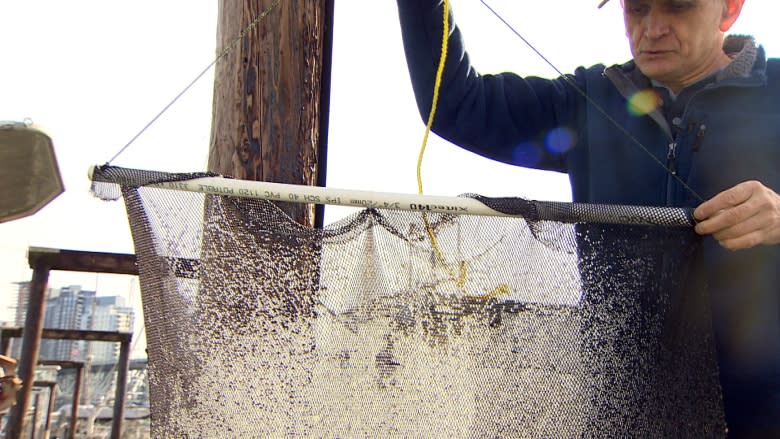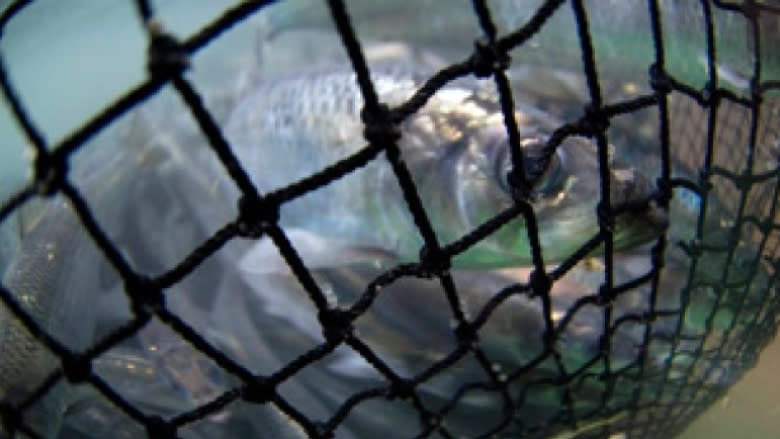A False Creek full of dolphins and orcas could soon be reality, says conservation group
Imagine Vancouver's False Creek teeming with dolphins, orcas and salmon — all swimming among the stand-up paddleboarders and dragon boat racers commonly seen there now.
That's what conservationist Jonn Matsen is working towards with his group, the Squamish Streamkeepers.
First, the society is making new attempts to bring herring back to the downtown inlet. So far, their efforts have been met with great success.
"Each one of these little tiny sparkling things is a herring eggs," said Matsen, pulling a homemade net from the water. "There's millions on there."
Herring, young and old, are a critical part of the food chain that attract a broad variety of predators — including humans. The fish were once a major feature in and around False Creek.
"Historically, there were 20,000 tonnes of fish that lived off the plume of the Fraser River in 1966, now there are zero to 100 tonnes," Matsen explained.
Building on past successes
The Streamkeepers' efforts in False Creek began with wrapping toxic creosote-covered dock pilings to increase herring spawn.
But while that work had an estimated, somewhat successful survival rate of 50 per cent for herring roe, it didn't match similar tactics that were fully successful elsewhere.
The group discovered that the rise and fall of the tide coated the tiny eggs in oil and pollutants lying mostly on the water's surface.
Last year, the society experimented by putting out two nets below water to mimic kelp and eel grass that grew in the waters of False Creek decades ago.
The test was a hit, seeing the 100 per cent success rate the group had attained elsewhere.
This year, Matsen and his group have put out 90 nets to continue the test.
"Every one of [the nets] is probably covered with three million eggs," he said.
So far, the results are showing continued success, leading Matsen towards an even bigger goal: he intends to put 1,000 nets in False Creek next year.
"We're going to have to just plaster this whole area," he said.
"You'll see dolphins and orcas in False Creek in about five, six years if what we do is working right."
With files from CBC's Deborah Goble



